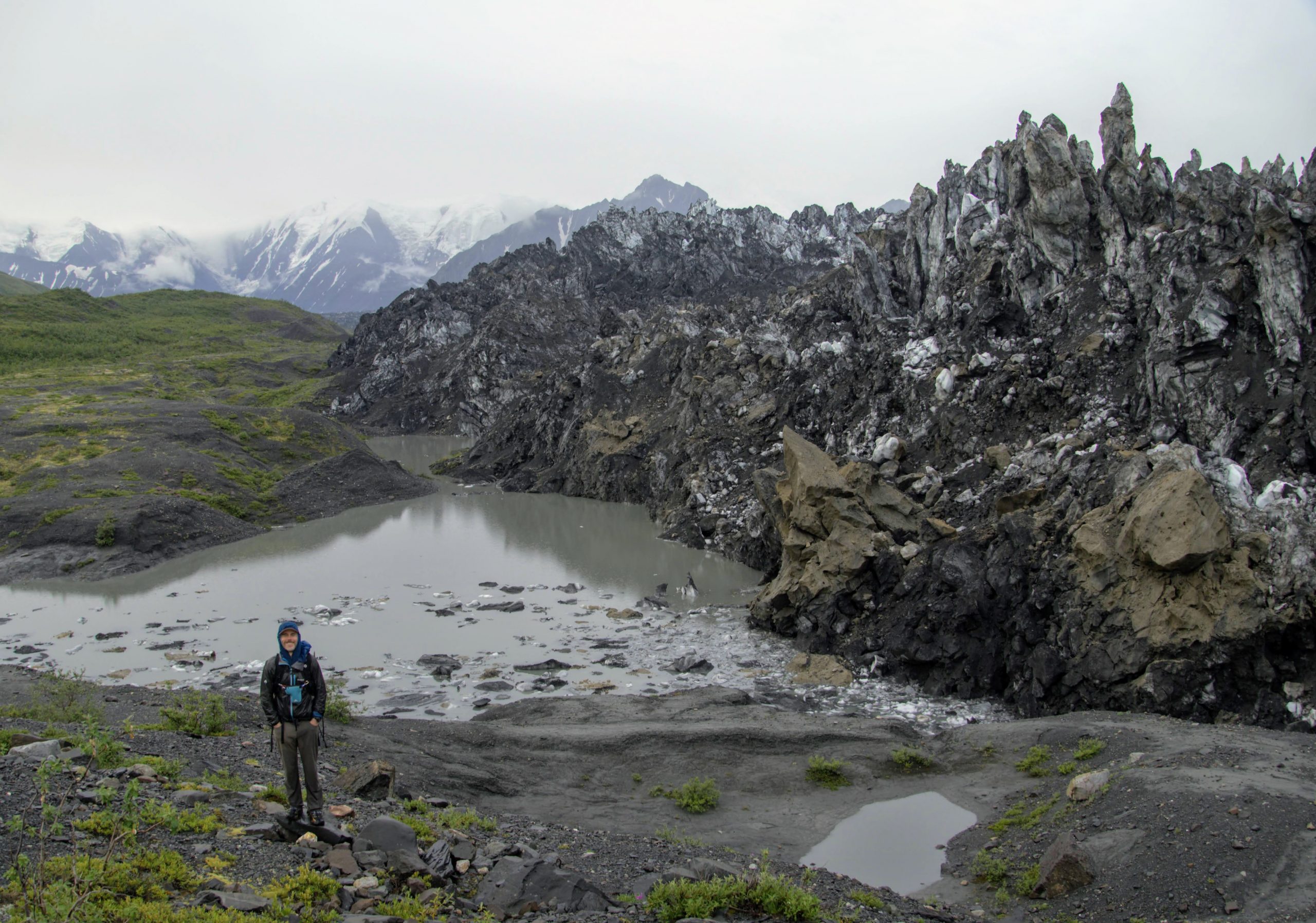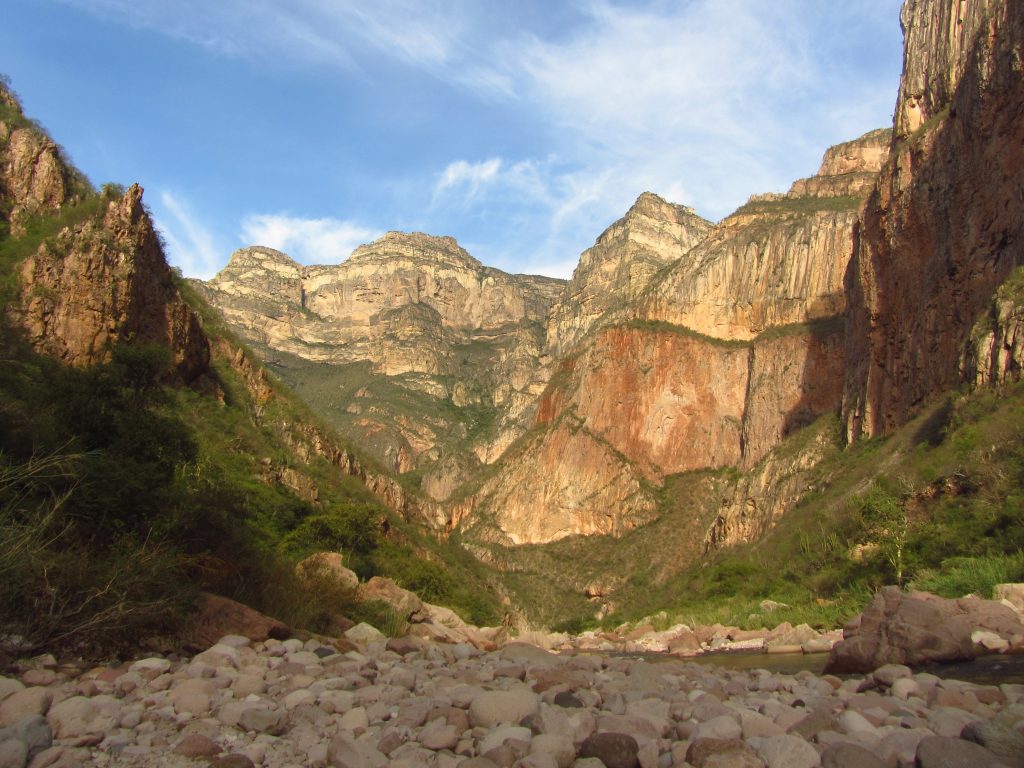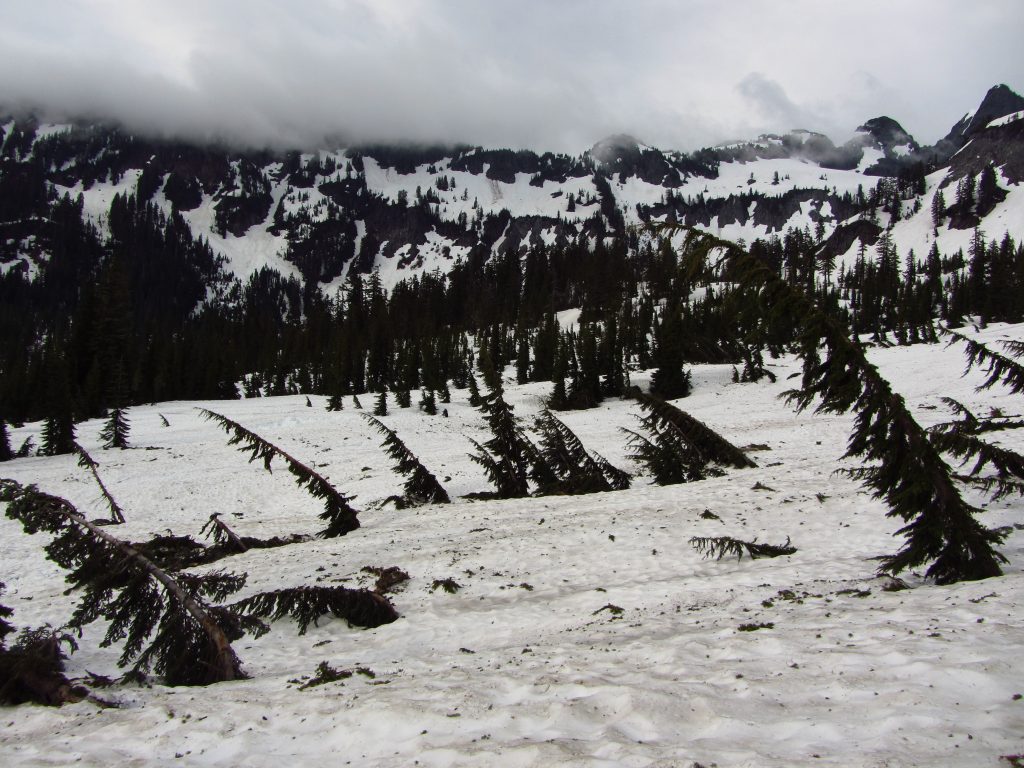In 2017 I did a Reddit AMA at /r/Ultralight. Over the course of five or six hours, I was asked a bunch of hiking-related questions, one of which was, “Can you give me your best piece of advice for backpacking that does not involve gear?” My answer was as follows: “When challenging backcountry situations arise, try to process them as an objective observer rather than a subjective participant.” In the following article, I expand on that response:
There are a multitude of reasons to go hiking. Relaxation, fun, peace, contemplation, the challenge, the opportunity to disconnect, the opportunity to reconnect, solitude, spending some time with friends; the list goes on and on. However, irrespective of what your motivation(s) may be, one thing we all have in common is the desire to come back from our respective journeys safe and sound. And that, in a nutshell, is why objective decision-making in the backcountry is so important.

Yours truly and the incredible Muldrow Glacier / This photo was taken during a seven-day, 190 km (118 mi) east-to-west trek through Alaska’s Denali NP in 2021. We had to alter our original route plan due to the fact that the aforementioned glacier was surging for the first time in 64 years, which meant that we were unable to cross the Mckinley river (which originates from the Muldrow).
If you spend enough time out in the boonies, eventually, you will be faced with scenarios in which your welfare is potentially at risk (e.g., fording swollen rivers, negotiating avalanche terrain, arriving at an anticipated water source only to find it bone dry). The ability to process such situations objectively, rather than subjectively, can mean the difference between emerging safely out the other side and finding yourself up poo creek with a rusty teaspoon for a paddle.
Swift Creek Blues
Let’s go from metaphorical watercourses to real ones. In July and August, 2011, I hiked eastbound on the Pacific Northwest Trail. It was the first hike in the 12 Long Walks series. An historically high snow year, combined with a cool spring, meant that during the first two weeks of my journey, there was still a great deal of snow around in the mountainous areas of western Washington (Olympics and Cascades).
The snow, combined with warmer summer temperatures, meant that the rivers were running particularly high. One such waterway was the aptly named Swift Creek in the Mount Baker – Snoqualmie National Forest. With the bridge out and the glacial-fed waters raging, there was nothing for it but to look for a safe place to cross. So that’s what I did. And for the next two hours, I ploughed up and down the densely vegetated bank (sometimes through unforgiving Devil’s Club) before eventually finding a place where I deemed it safe to ford.
Prior to discovering the desired location, I had previously spotted two other places where crossing would most likely have been possible. In both situations, I was roughly 90% to 95% certain I’d be able to manage it without falling into the drink. However, in my book, 90% to 95% is not good enough when the alternative is getting swept downstream. Therefore, on both occasions, I resisted the temptation and kept bushwhacking in search of a better option.

Swift Creek
Scenarios such as the one mentioned above can test both novice and experienced hikers alike. Emotions, distance objectives, fatigue, time goals, and crappy alternatives (e.g., two hours of bushwhacking) can all play a part in clouding our judgment. Yet it is precisely the ability to remove these elements from the decision-making process that has saved my hide in the backcountry more times than I can tell you over the past few decades (Note: During this time, I haven’t been immune to the occasional ill-advised choice as well).
Informed and Objective
Next time you are faced with a potentially hazardous situation while hiking, try the following exercise. Start by taking a step back. Then breathe deeply and exhale. Repeat four or five times. The goal is to be as calm as possible and not rush your decision. Have a chocolate if you like. Now take yourself out of the equation, and imagine that you are a well-informed witness who understands not only the conditions but also possesses an intimate knowledge of the skills, strength, and ability of the protagonist (i.e., you). By following these steps, you help to remove pride and ego from the decision-making process, thereby increasing the likelihood of making sound choices.

Yours truly on the 24-day traverse of Southwest Tasmania, one of the most physically and mentally demanding trips I’ve done over the years.
I know what some of you are thinking. This all sounds great in theory, but when emotions are running high and you are giving all that you can, it isn’t always so easy to think clearly. That’s true. But remember the following – objectivity and passion aren’t mutually exclusive. It is possible to find a balance. And being able to manifest the equilibrium between drive and impartiality can make all the difference in regard to your safety.

Copper Canyon Traverse, Mexico, 2013 (613 km/22 days) | Largely off-trail and with a lot of bushwhacking and bouldering involved, by any criteria, this was a tough hike. When you throw in the fact that it took place in one of the dodgier regions on the planet thanks to the drug cartel influence, the CCT was a hike in which objective decision-making was as important, if not more important, than our ability to negotiate the 2,000 m (6,562 ft) deep canyons we were constantly climbing in and out of.
It is worth noting that making objective decisions in the wilderness becomes easier with experience. Hiking is no different from anything else. The more you do something, the better you become. And with improvement comes a heightened level of comfort in a wider range of potential scenarios. This, in turn, enables you to make more informed decisions with a cooler, calmer head.
Summary
The ability to process challenging backcountry situations in an objective manner is something you rarely hear talked about in hiking circles. People seem more interested in tangible barometers such as distance covered, speed, gear weight, and “name” hikes finished.
I get it. Hikers are no different from everyone else. We love our metrics. But as is often the case in other aspects of life, it’s the intangible things that really matter when the shit hits the fan. And while the heart and spirit may be the catalysts for many of us heading out into the wilderness, when worst-case scenarios occur, usually it’s what goes on between our ears that dictates whether or not we return home safely.
Revised 2023
Related Posts
- 12 Long Walks – Maps, Stats, and Journals
- Copper Canyon Traverse
- Southwest Tasmania Traverse
- Reddit AMA at /r/Ultralight
Discover more from The Hiking Life
Subscribe to get the latest posts to your email.

In June a couple years ago a friend and I were doing a 9 day loop out of Horseshoe Meadows just south of Whitney. We dropped down the Kern River and found the valley under water in most places. All the creeks we came to were raging. We got to Rattlesnake Creek, a little less than a third of the way through the trip and found an impassable torrent. We hiked up and down for a half hour and decided to head back. No drama. We felt a sense of loss that the trip we’d planned was no more. But I knew the 80% or less chance we’d get across without swimming was not good enough. That gave us the chance to run into a couple more rattlesnakes on our way down to the bridge across the Kern. LOL…
When a Creek tells you that its name is *Swift* Creek, believe it the first time.
Good advice on pausing.
Some hikers will simply stop, get comfortable and have a hot drink and think things over without the unnecessary urgency of immediately continuing.
Great advice. Having read the older version of this text influenced several of my decisions to turn around in dangerous conditions. In hindsight, these situations become some of the most memorable ones and a were great opportunity for learning.
The experience and knowledge I acquired during fifteen years with my local mountain rescue unit emphatically supports your conclusions. The felt need to stay on schedule caused many of the deaths and injuries we responded to. Rarely did we find people simply hunkered down for the night waiting for daylight before proceeding. Schedule and commitments to family and work need to be thought of in the context of safety as you so strongly point out in this article. Thank you for writing this, it’s a message that needs to be broadcast much more widely and frequently. People can survive getting fired for not showing up at work Monday morning. Humans can survive nearly a month without food. Discomfort is infinitely better than death or severe injury. Also, thank you Jeffrey for sharing your story, you set a good example!
Fabulous, I am going to print this, plasticise it and keep it in my pack
You were wise to turn around. But some patience may have worked too.
One bit of advice i learned when hiking in the rockies through the summer season was that creeks and rivers ebb and flow throughout the day. If encountering high water flow at a trail crossing i would find a place to camp for the night, then check the crossing again in the morning. Chances are pretty good that flow will have dropped because snow and glacial melt slows or ceases during colder night time temperatues, giving you a good chance there will be a safe place to cross before the sun gets that flow going again.
Use poles for support of course, and always unbuckle your pack before crossing in case you lose your footing and get swept along, so you can get out of the straps quickly and not be dragged under.
Ps. Ive read that drowning is one of the top hazards for hikers!
Hike Safe everyone.
Hi,
Thanks for your message. In the scenario I mentioned in the article, I didn’t turn around; I searched for an alternative crossing point. Often the best/safest place to cross a watercourse is not where it intersects with the trail. For a detailed overview of the whys and wherefores of fording rivers, see the following article I put together for the website some years ago: https://www.thehikinglife.com/2015/03/how-to-ford-a-river/ (it touches on some of the points you mentioned).
Cheers,
Cam
I try to make good decisions, and I think I’ve gotten better at it as I’ve gotten older. I stopped worrying about schedules several years ago (it’s not like I’m setting any records). But, you’ve provided me with a better way to detach and evaluate. When confronted with potentially dangerous situations, I’ll ask myself how would I advise another hiker with similar skills.
Thanks Cam
Excellent advice for a walker/climber/skier of every ability. You can only push your risks so many times before something goes terribly wrong. Good decision making comes from experience, experience comes from reviewing poor decision making.
Kind regards
Allan Donnelly
Good work Cam to bring this topic up again as well as the suggestions to deal with threats. Stay calm, stay safe.